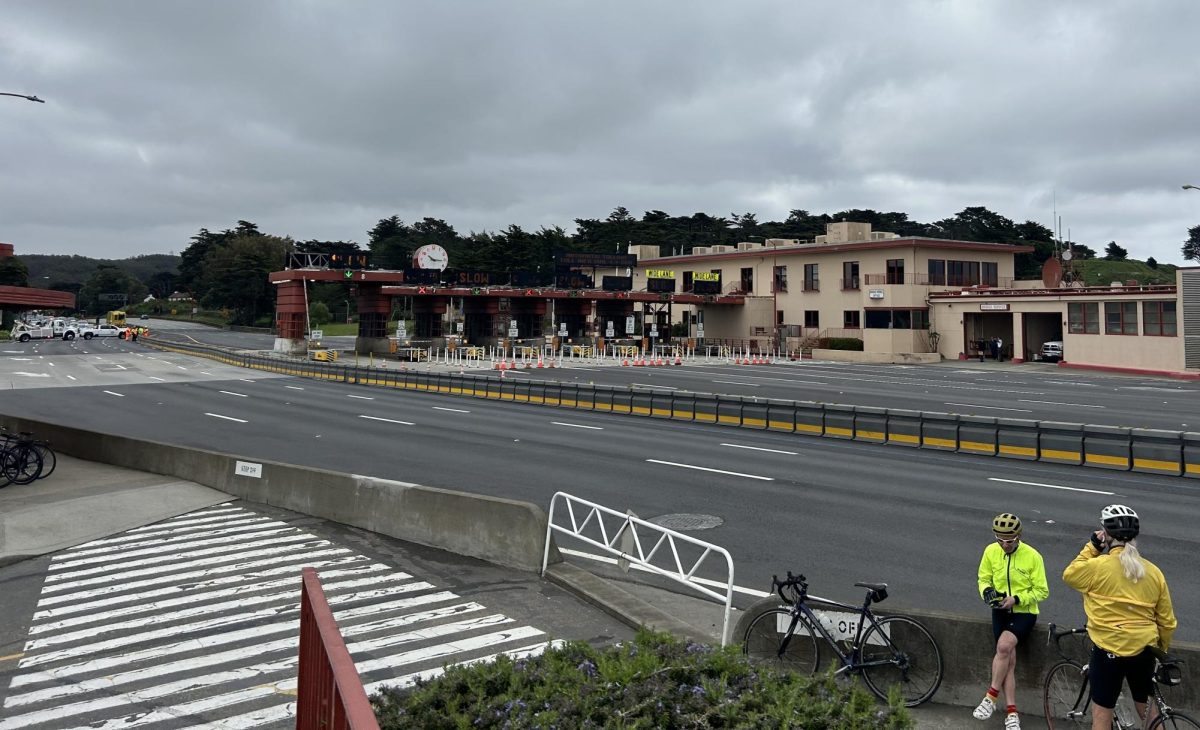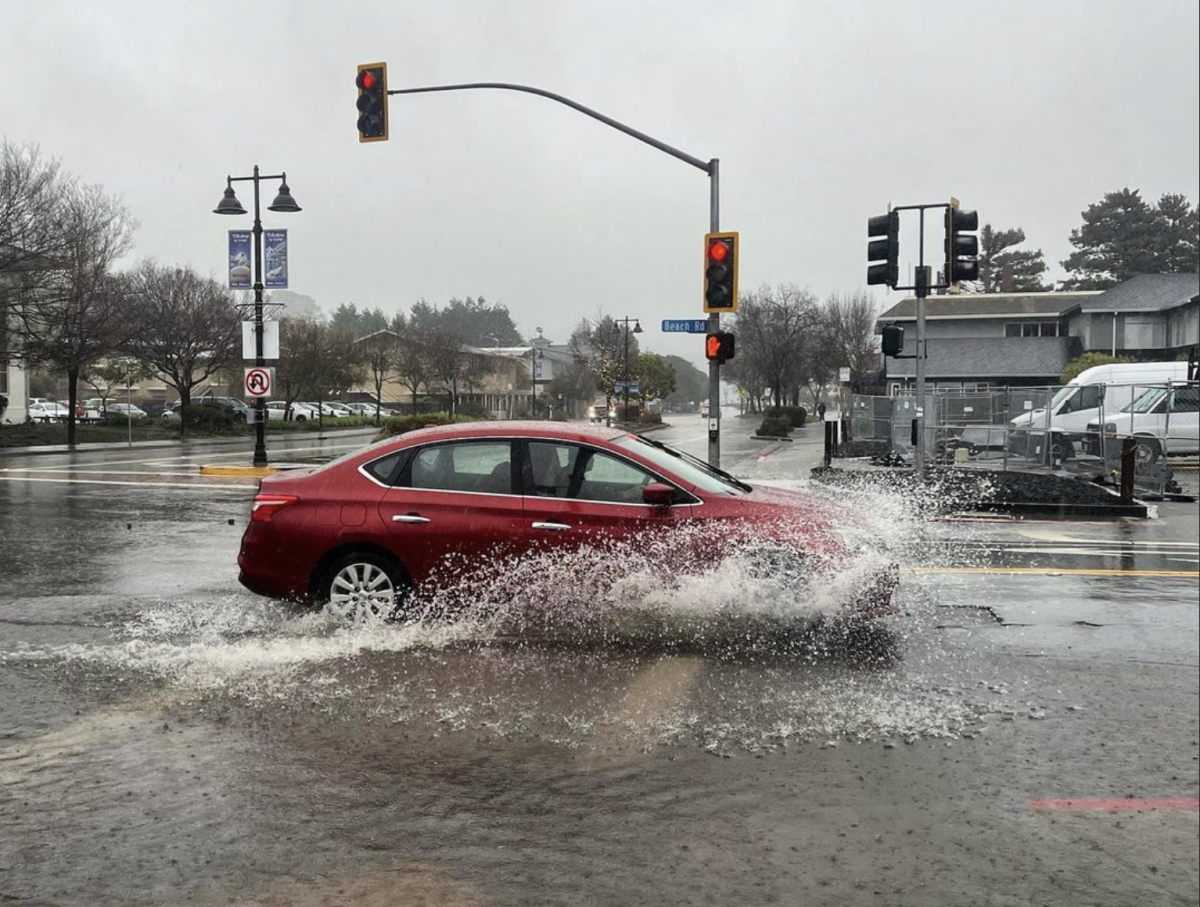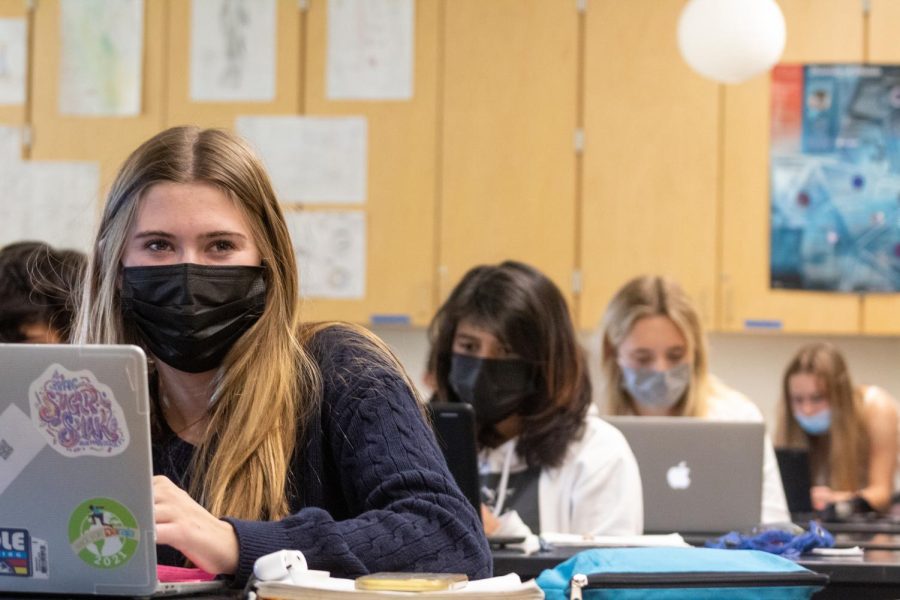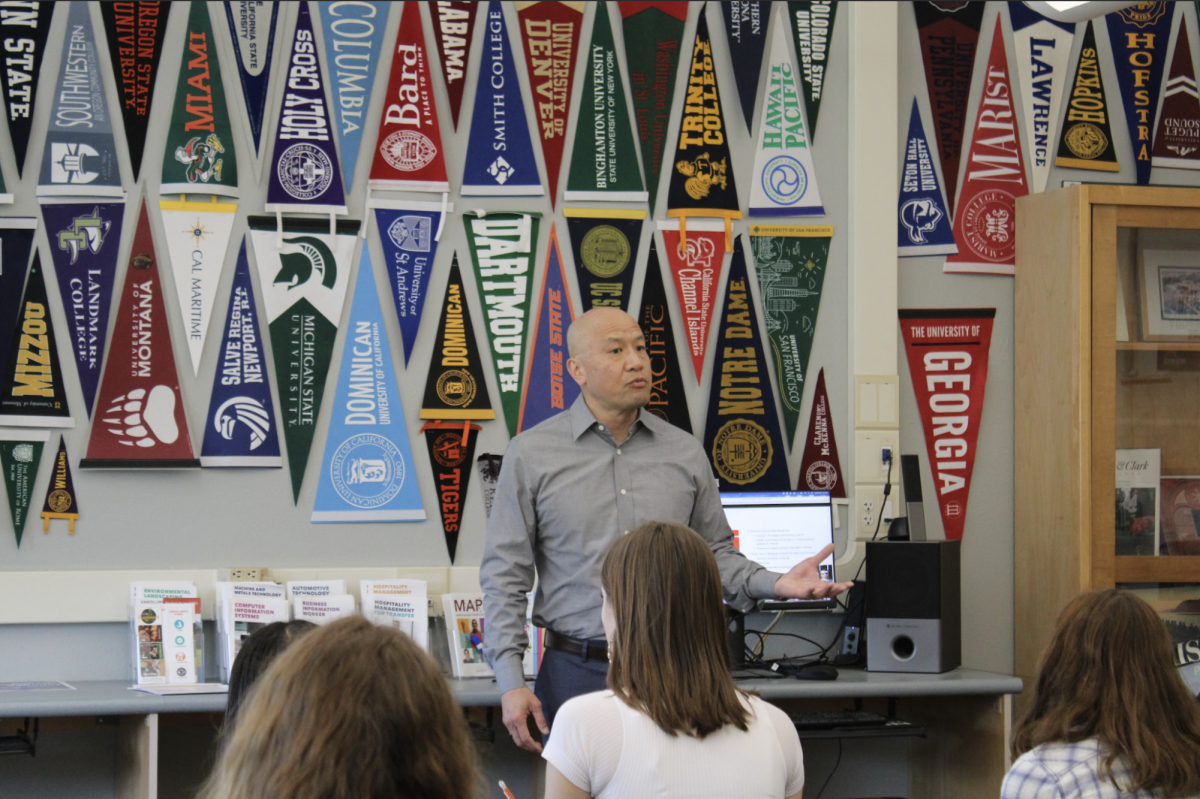Local fire-fighting authorities, including Marin County Fire Chief Jason Weber and Tiburon Fire Chief Richard Pearce, are increasingly concerned about when—rather than if—a disaster similar to the North Bay wildfires will happen in Marin. Laurie Nilsen, Tiburon’s Emergency Services Coordinator, echoes this sentiment.
“From what I’ve understood from the experts, it’s the same thing with earthquakes—it’s going to happen,” Nilsen said.
The dawning realization that such a disaster is not improbable is one of the notable consequences of the recent North Bay fires. It has resulted in increased disaster-preparedness planning by local communities.
Late last year, Belvedere launched a new website, belvedereblockcaptains.org, for residents to register information about themselves and household members. This confidential database is designed to assist first responders in the event of a disaster. It contains information such as the number of people and pets in a household, phone and email contact info, location of water, electricity and gas shut-offs, any person with special needs and anyone with special emergency training.
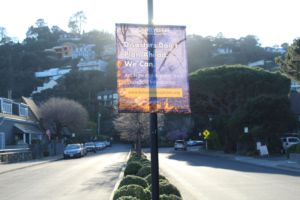
According to Nilsen, the intent of the new website is to bring neighbors together and encourage them to help each other in the event of an emergency.
“When first responders are overwhelmed and not able to get to everybody as much as they want to, neighbors will be able to help neighbors,” Nilsen said.
Belvedere has also expanded its block captain program to help first responders. The program was launched in 2016 and designates a volunteer in each neighborhood to be accountable for emergency response and communication. Block captains will find out which residents need help and relay that information to a command center, so that police, fire and medical officials can send appropriate forces to administer first aid, according to their website.
“[The block captains] are gathering information and working with their neighbors so they can help each other out in the event of an emergency,” Nilsen said. “They can help with notifications or shutting down utilities.”
Belvedere conducted two recent evacuation exercises in which block captains went door-to-door surveying residents’ preparedness. Since the fires in the North Bay, Marin Medical Reserve Corp volunteers have begun offering free First Aid for Disaster Response (FADR) classes all around Marin County to teach and practice hands-on first aid.
Tiburon is making safety improvements as well, according to Mayor Jim Fraser. The town is responding not only to the large wildfires but also a three-acre fire that threatened two homes near 100 Gilmartin Drive in July of last year.
“We have implemented some training exercises with communication and purchased radio devices towards [enhancing] communication,” Fraser said.
These family radio system (FRS) radios will enable block captains to coordinate more efficiently with each other and with first responders, per Fraser.
In addition to the new radios, in February, Tiburon’s town council will consider acquiring evacuation decals which adhere to the streets.
“If you’re out on the street and not sure which way to go—‘do I turn right, do I turn left, do I go up or go down’—there will be arrows with a big ‘E’ on them that will help people navigate pathways to a safe haven,” Fraser said.
Belvedere’s town council recently approved implementation of this signage, according to Fraser. Tiburon officials like Fraser hope these new markings will prompt residents to walk their neighborhoods and learn the various evacuation routes.
Existing disaster preparedness programs have recently become more in demand as well. One ongoing program is the “Get Ready” training that Tiburon hosts to address all types of emergencies. Get Ready classes teach how to prepare for, act during and recover from a disaster. They are free and held every other week in downtown Tiburon.
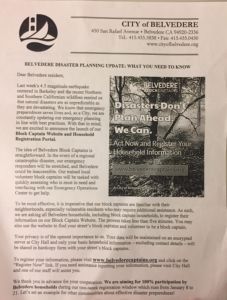
“After the fires, people woke up to the fact that disasters can happen really close by,” Nilsen said. “So where we were having 10 people maximum in classes before the fires, all of a sudden it’s 30 to 70 people.”
Get Ready classes had to be moved from the Tiburon police station to the Tiburon Town Council building due to the increase in attendance.
“Just between the time of the fires and my last class—Dec. 17 or 18—290 people came for the free training,” Nilsen said.
Fraser and Pearce both believe one of the most significant lessons from the North Bay and recent Tiburon fires is the necessity of cutting back shrubs and trees near houses, allowing firefighters to prepare proper fire breaks and minimize homeowner damage.
Residents on Gilmartin Drive had pruned back their vegetation, and this allowed the Tiburon fire department to successfully contain the July 2017 fire to only three acres.
“We were able to make a quick attack on that fire and the homeowners really did a great service by ensuring they had suitable defensible space,” Pearce said. “It was a big win for us.”
Existing disaster preparedness programs have been ongoing throughout Marin County for a number of years. Per the Marin Independent Journal , Corte Madera residents John and Lee Howard started a Neighborhood Response Group after taking a Get Ready class approximately 11 years ago. The 75-person team, which also consists of Larkspur residents, is organized with block captains, incident commanders and a medical team. The program has expanded to incorporate 11 groups serving more than 2,500 residents in Corte Madera and Larkspur.
The goal of the program is to have every neighborhood in Corte Madera, Larkspur and Greenbrae ready to care for itself for a limited period of time.
“In an earthquake, public safety officials will likely be overwhelmed, and they tell us that we must be prepared to be on our own for five to 10 days,” the Neighborhood Response Group website said. “Neighborhoods must also be prepared to evacuate in the face of raging wildfire, and again we may well have to do so without help from public safety officials.”
Several Marin communities, including Belvedere, have mobile trailers full of medical supplies so they can set up first aid stations in multiple locations. Tiburon officials have established Del Mar Middle School in Tiburon as the location for their first aid station, should a disaster occur.
“Being over-prepared is an objective that we’d like to try to achieve,” Fraser said. “We probably won’t be able to, but staying conscious about what you need to do to be prepared [is our goal].”
Belvedere and Tiburon students are welcome to join Tiburon’s Disaster Advisory Committee’s quarterly meetings at the town hall, according to Fraser. Nilsen also encourages all students to participate in disaster planning. She suggested that students take a Community Emergency Response Team (CERT) course and assess the situation in their own homes.
“If you have a good plan and some good supplies, you’re going to survive,” Nilsen said.


